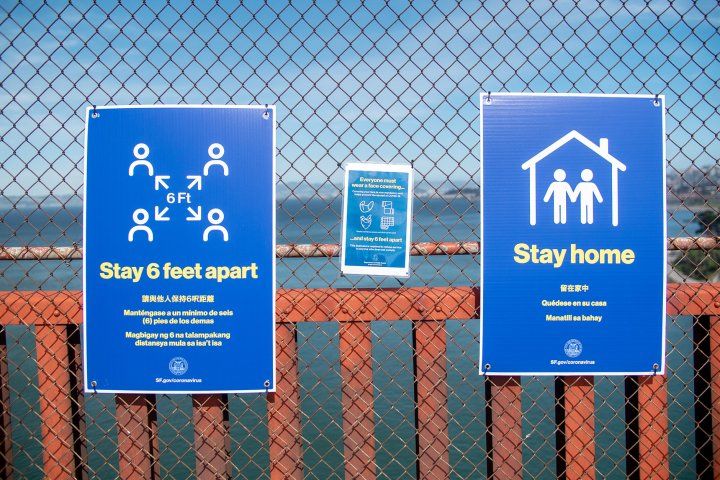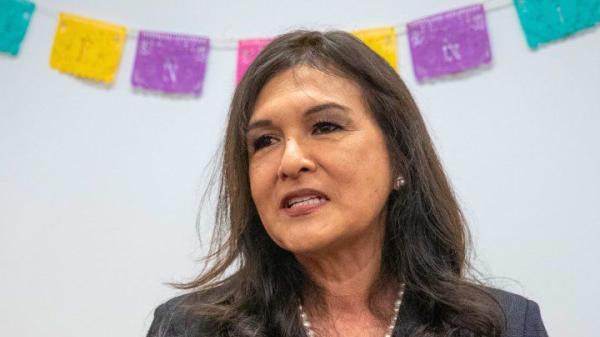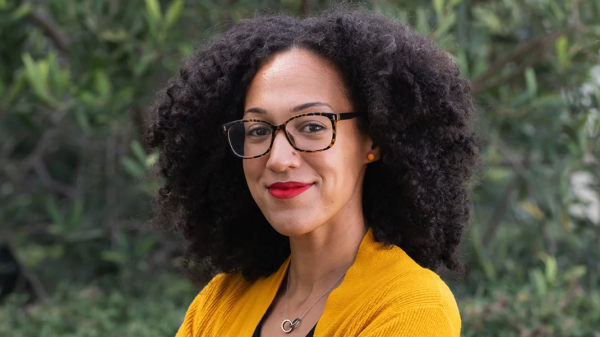Latinos and Residents Without a High School Degree Saw No Benefit
Nearly 20,000 more Californians died in the first six months of the pandemic than would have been expected to die in a normal year, with a disproportionate number of those deaths occurring among older adults, Black or Latino residents, or those who had not completed high school, according to an analysis by researchers at UC San Francisco.

Two signs on the Golden Gate Bridge in San Francisco ask people to remain physically distanced and to stay at home.
Researchers used excess deaths – the number of deaths above what would be predicted in a given year without a mass casualty event – as a rough indicator of the pandemic’s overall death toll. But the exact number is hard to discern, and the excess death total may include deaths from causes other than COVID-19.
Despite the pandemic’s high death toll, which continues to climb even as the state endures a second period of sheltering in place, the researchers concluded that the first lockdown from March 19 through May 9 lowered the number of excess deaths for most but not all groups.
“The early shutdown worked for California,” said Kirsten Bibbins-Domingo, MD, PhD, professor and chair of the Department of Epidemiology and Biostatistics at UCSF and the senior author of the paper. “Mortality rates that were rising early in the pandemic dropped substantially in a timeframe that coincides with the shutdown. But, importantly, not all Californians seemed to benefit.”
Specifically, Latinos – who make up nearly 40 percent of California residents – and adults without a high school degree did not experience a decline in excess deaths with the shutdown. These groups are disproportionately represented among low-wage essential workers, who continued stocking grocery store shelves, making deliveries and performing other work deemed necessary to keep society functioning. These workers were also at heightened risk of infection because of crowded living conditions that made it hard to protect against the coronavirus.
Excess deaths in these groups continued rising through the lockdown and rose even higher once it was lifted. Among Californians with no more than a high school degree there were 500 excess deaths per week early in the spring. That figure rose to 1,000 per week by mid-August.
“These numbers are much higher than in other educational groups,” said Yea-Hung Chen, PhD, an epidemiologist at UCSF and first author of the study, published Monday, Dec. 21, 2020, in JAMA Internal Medicine. “The differences are even more dramatic when we account for population size.”
On a per capita basis, excess deaths were highest among California’s Black population, although they declined toward the end of the lockdown period. But excess deaths never declined for Latinos, or those without a high school degree.
Moreover, once lockdown ended, per capita excess deaths went up for everyone, regardless of their racial or ethnic group, or their level of education.
“This suggests shutdowns are an important tool during the pandemic, but they must be accompanied by attention and resources to high-risk communities,” Bibbins-Domingo said.
She and her team have posted a follow-up study on the medRxiv preprint server highlighting the specific sub-groups of Latinos with the highest death rates based on occupation and country of origin. “We hope this data will help to guide the pandemic response in a way that is responsive to the needs of these communities.”
Authors: Yea-Hung Chen, PhD, MS; Maria Glymour, ScD, MS; Alicia Fernandez, MD; Tung Nguyen, MD; Margot Kushel, MD; and Kirsten Bibbins-Domingo, PhD, MD, MAS, all of UCSF; and Ralph Catalano, PhD, MRP, of UC Berkeley’s School of Public Health.
Funding: National Institutes of Health
Disclosures: None
The University of California, San Francisco (UCSF) is exclusively focused on the health sciences and is dedicated to promoting health worldwide through advanced biomedical research, graduate-level education in the life sciences and health professions, and excellence in patient care. UCSF Health, which serves as UCSF’s primary academic medical center, includes top-ranked specialty hospitals and other clinical programs, and has affiliations throughout the Bay Area.




